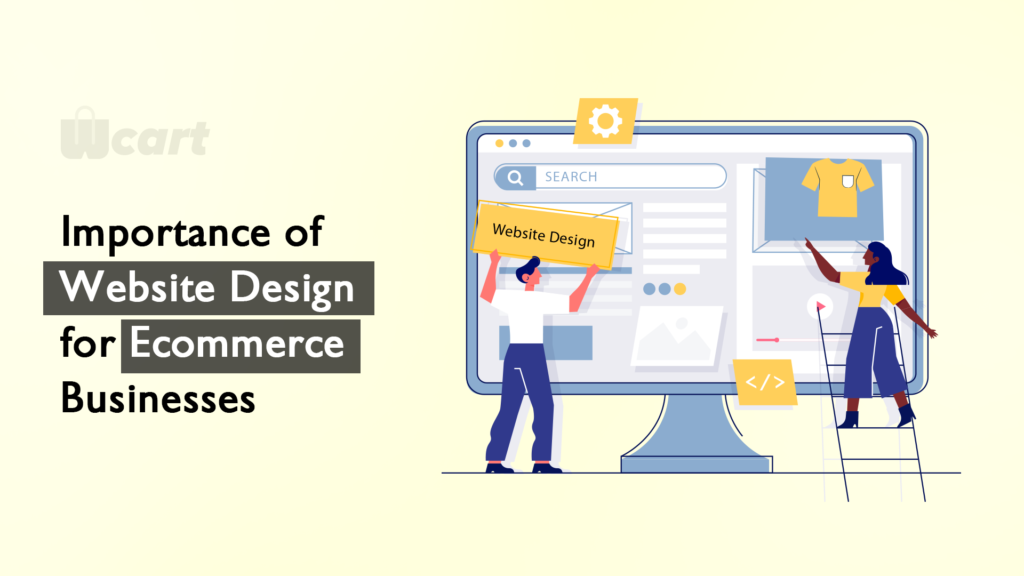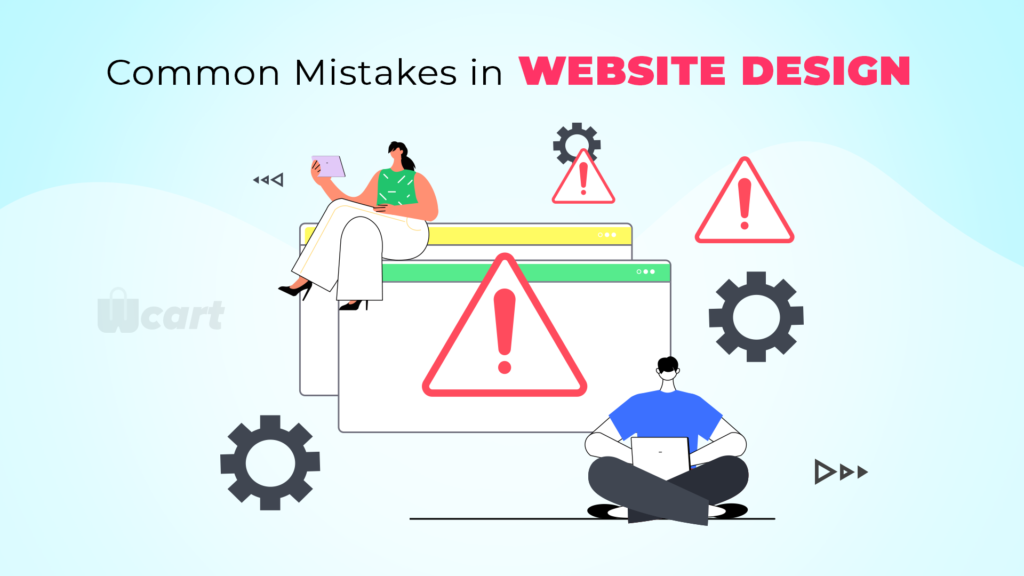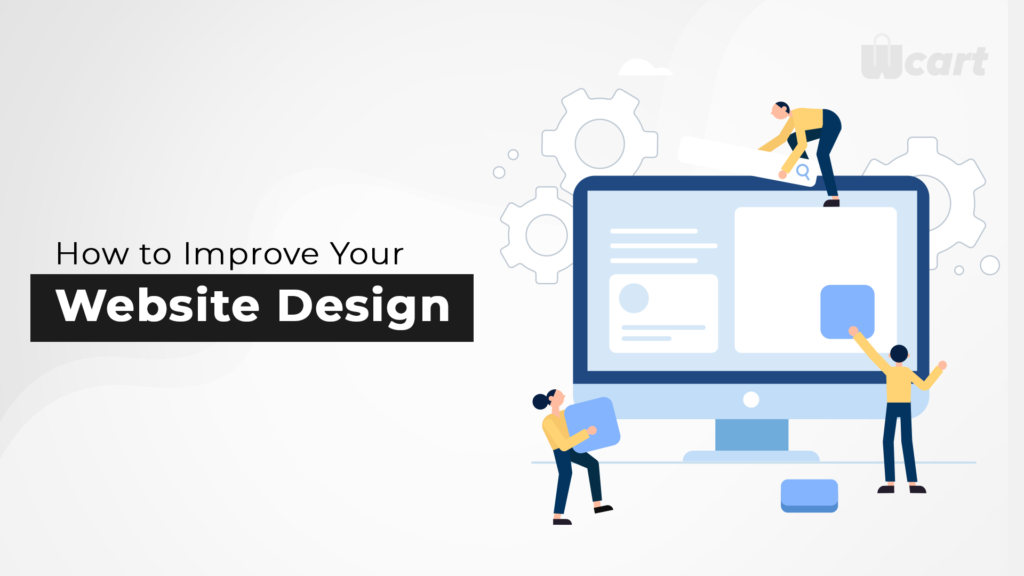The importance of a carefully designed website cannot be stressed while exploring the world of eCommerce businesses. Beyond just visual appeal, website design plays a crucial part in creating a wonderful user experience, developing brand identification, and boosting traffic and conversion rates. Surprisingly, research shows that nearly 75% of customers base their judgment of a company’s authority on the quality of its website design. In the boundaries of this article, we will explore the depths of the necessity of website design in the context of eCommerce businesses while also giving invaluable guidance and the best approaches to create a victorious shopping website design. Regardless of whether you are just beginning your online journey or want to polish your current digital presence, this collection of advice will prove to be invaluable.
Read More: To Know about Dos and Don’ts in Ecommerce web Design
Explanation of the Importance of Website Design for Ecommerce Businesses

The significance of website design cannot be overstated when it comes to Ecommerce enterprises. Since it holds the power to influence the user experience, search engine optimization, and ultimately, the triumph of the business itself. A well-designed website can boost customer trust, encourage engagement, inspire loyalty, and ultimately increase conversion rates and sales. Conversely, a haphazardly constructed website has the capability to repel potential customers and inflict detrimental harm on the brand’s image. In the fiercely competitive realm of eCommerce, it is imperative to possess a website that boasts a visually captivating appeal, seamless usability, and meticulous optimization for search engines in order to secure the triumph.
The Role of Design in Ecommerce

Website design plays a pivotal role in the realm of ecommerce enterprises. Its significance extends beyond mere aesthetics, encompassing the creation of a positive user experience that not only captivates visitors but also stimulates them to actively engage with the website and complete a purchase. A proficiently designed website holds the power to fortify brand identity and foster unwavering trust and loyalty among customers.
The impact of ecommerce website design spans across numerous facets of the business, exerting influence over website traffic and conversion rates. A website marred by subpar design, characterized by sluggish load times, perplexing navigation, and a cluttered layout, can leave users disenchanted and result in alarmingly high bounce rates. Conversely, a website that boasts seamless navigation, visually alluring aesthetics, and optimization for mobile devices has the potential to entice and retain customers, ultimately driving up sales figures.
Furthermore, website design holds sway over search engine optimization (SEO) and the website’s positioning in search engine results pages (SERPs). A website that is meticulously crafted with SEO considerations in mind can significantly enhance its visibility, attracting a steady stream of organic traffic.
Taken together, the role of website design in the triumph of ecommerce businesses cannot be overstated. A well-executed design strategy serves as a catalyst for increased traffic, improved conversion rates, and unwavering customer loyalty. Conversely, a lackluster website design can exert an adverse influence on these vital metrics.
Essential Components for an Effective Shopping Website Design

Exploring the key facets of a thriving design for an online shopping website:
- Effortless and instinctive navigation: Navigating through an eCommerce website holds paramount significance in its design. The navigation menu should be seamlessly usable, lucid, and uncomplicated, ensuring swift product discovery for users.
- Adaptable design: Adaptable website design ensures seamless appearance and functionality on various devices, including desktops, laptops, tablets, and smartphones. This becomes even more crucial as an increasing number of customers choose to shop online using their mobile devices.
- Concise and transparent product depictions: Product descriptions should be readable, including dimensions, colors, materials, and relevant specifications.
- Top-notch product visuals: Vivid, top-notch product images play a pivotal role in aiding customers’ informed purchase decisions. A successful shopping website design should display expertly photographed products that elegantly highlight their best features.
- Secure payment gateways: Online security stands as a paramount concern for customers. An effective shopping website design must incorporate secure payment gateways to safeguard customer information and facilitate a seamless checkout experience.
- User-generated appraisals: Incorporating user-generated reviews fosters customer trust and acts as a catalyst for increased sales. A successful shopping website design should seamlessly integrate a review system, enabling customers to provide feedback and rate products.
- Tailorable filters: Tailorable filters enable customers to efficiently find desired items on a well-designed shopping website by customizing search criteria such as size, color, price, and brand.
- Streamlined checkout process: The process should be uncomplicated and user-friendly, minimizing the steps required to finalize a purchase. A thriving shopping website design should prioritize an efficient checkout experience, reducing cart abandonment and augmenting conversion rates.
Read More: To Know about Ecommerce Website Design
Optimal Strategies for Designing a Shopping Website

Here’s an explanation outlining several effective strategies for designing a shopping website:
- Embrace simplicity: A streamlined and clutter-free website design facilitates navigation and enhances the user experience. Avoid overwhelming the site with an excess of colors, fonts, and graphics.
- Maintain a consistent layout: Consistent design elements enhance website navigation and improve the user experience. Employ a consistent color scheme, typography, and design elements throughout the site.
- Incorporate high-quality product images: Utilising high-quality product images is crucial for enabling customers to make well-informed purchasing decisions. These images should be sharp, well-illuminated, and exhibit the products from various angles, providing customers with a comprehensive view.
- Utilise clear calls-to-action: Calls-to-action (CTAs) must be explicit and easily understandable. Employ contrasting colors, concise text, and appropriate placement to make CTAs stand out.
- Optimize for mobile devices: Given the rise in mobile usage, creating a mobile-friendly website is crucial. Adopt a mobile-first approach to design, ensuring the website is easy to navigate and use on mobile devices.
- Select legible fonts: The choice of font type and size can significantly impact readability. Employ easily legible fonts and appropriate font sizes to ensure that the content is clear and readable.
- Prioritise security: Customers prioritize online safety. Secure the website by implementing SSL certificates and secure payment gateways to safeguard customer information.
Overall by adhering to these best practices, eCommerce businesses can develop a visually captivating, user-friendly, and conveniently accessible shopping website design.
Common Mistakes in Website Design

Here are some common mistakes to avoid in shopping website design:
- Complex Navigation: To avoid user confusion and frustration, prioritize clear and user-friendly website navigation. Complex navigation can lead to a poor user experience, ultimately resulting in lower engagement and decreased sales.
- Poor mobile optimization: With the increase in mobile usage, it’s essential to optimize the website for mobile devices. Failing to do so can lead to a poor user experience and lower conversions.
- Slow loading times: Slow loading times can lead to high bounce rates and lost sales. Optimize the website for fast loading times by compressing images, reducing HTTP requests, and optimizing code.
- Cluttered Homepage: A cluttered homepage can make it difficult for users to find what they’re looking for. Keep the homepage clean and simple, with a clear call to action.
- Poor Product Images: High-quality product images are crucial to making sales. Poor quality or low-resolution images can deter customers from making a purchase.
- Confusing Checkout Process: A confusing checkout process can lead to cart abandonment and lost sales. Ensure that the checkout process is simple, easy to use, and includes clear calls to action.
- Lack of Product Information: Customers want to know as much as possible about a product before making a purchase. Ensure that product descriptions include all relevant information, i.e. size, color, material, and any other relevant details.
- Poor Search Functionality: A poor search function can make it difficult for users to find what they’re looking for. Ensure that the search function is easy to use and includes customizable filters to help users narrow down their search.
Overall by avoiding these common mistakes, eCommerce businesses can improve their website design and create a positive user experience that leads to increased sales and customer satisfaction.
Explore More: To Know about Dos and Don’ts of Ecommerce Web Design
How to Improve Your Website Design

To improve your shopping website design, you can:
- Simplify the design: Ensure that your website design is simple, visually appealing, and easy to navigate. Avoid clutter and confusion to create a positive user experience.
- Optimize for mobile: To enhance the shopping website design, optimize it for mobile and ensure responsiveness across various screen sizes.
- Use high-quality product images: Use high-quality images that showcase the products from multiple angles.
- Use clear calls-to-action: Use clear and easy-to-understand calls-to-action that stand out on the page.
- Prioritize site speed: Optimize the website for fast loading times to improve user experience.
- Use user-generated content: Include user-generated content like reviews and ratings to build customer trust.
- Ensure security: Prioritize online security to protect customer information.
- Test and iterate: Continuously test and iterate the website design to identify and address areas of improvement.
Finally, by implementing these strategies, eCommerce businesses can improve their shopping website design and create a better user experience that leads to increased sales and customer satisfaction.
Read More: To Design your Dream Online Store
Shopping Website Future Designs

The future of shopping website design is constantly evolving, and it is important for eCommerce businesses to stay up-to-date with the latest trends and technologies. Here are some potential future developments in shopping website design:
- Personalization: With the increase in data collection and AI technology, shopping websites will be able to personalize the user experience based on individual preferences and behavior.
- Virtual and Augmented Reality: Virtual and augmented reality technologies will allow customers to experience products in a more immersive way, leading to increased engagement and sales.
- Voice Search: The rise of smart home devices and voice assistants will lead to an increase in voice search, which will require websites to optimize for voice-based queries.
- Sustainability: As more consumers prioritize sustainability, shopping website design will need to reflect this trend by incorporating eco-friendly design elements and promoting sustainable products.
- Multi-Channel Integration: Shopping website design will need to integrate seamlessly with other channels, such as social media, to create a more cohesive customer experience.
- Accessibility: The shopping website design will need to prioritize accessibility for all users, including those with disabilities, to create a more inclusive experience.
Overall, the future of shopping website design will continue to prioritize user experience, personalization, and integration with new technologies to create a more engaging and seamless shopping experience for customers.
Conclusion
In conclusion, the design of a shopping website holds immense importance for ecommerce enterprises seeking to allure and retain customers. An impeccably crafted website can enhance the user experience, amplify sales, and foster customer trust and loyalty. By adhering to best practices and sidestepping common errors, ecommerce businesses can fashion a shopping website that exhibits visual allure, seamless navigation, and optimal conversion.
Furthermore, staying abreast of the latest trends and technologies can empower businesses to remain competitive and provide customers with a captivating and personalized shopping experience. As the realm of shopping website design advances ceaselessly, businesses must adapt and incorporate novel technologies and design elements to cater to the ever-changing needs and preferences of their customers.
Frequently Asked Questions(FAQs)
What are some key design elements to consider when creating a shopping website?
When creating a shopping website, it’s important to consider elements such as navigation, product placement, branding, and mobile responsiveness. Hence navigation should be intuitive and easy to use, with clear categories and search functionality.
How can I optimize my shopping website for search engines?
There are several ways to optimize a shopping website for search engines, including using relevant keywords in product descriptions and titles, optimizing image filenames and alt text, creating a sitemap, and using metadata such as title tags and meta descriptions.
How can I improve the checkout process on my shopping website?
To improve the checkout process on a shopping website, it’s important to simplify the process as much as possible. This can be achieved by minimizing the number of steps required to complete a purchase, providing clear instructions and error messages, and offering multiple payment options.
How can I encourage customers to return to my shopping website?
One way to encourage customers to return to a shopping website is by offering personalized recommendations based on their browsing and purchase history. Another effective strategy is to offer promotions and discounts to repeat customers. Finally, providing excellent customer service and support can help to build a loyal customer base.
What are some common mistakes to avoid when designing a shopping website?
Some common mistakes to avoid when designing a shopping website include cluttered and confusing navigation, slow loading speeds, inconsistent branding, poor-quality product images, and complex checkout processes. It’s significantly to keep the design clean and simple, with a focus on the user experience. Regular testing and optimization can also help to identify and address any issues with the website design.




Leave a Reply